Bodywork, which consists of basic training, performance techniques, dance, and more, is an important part of Max Reinhardt Seminar students’ training. We invited four instructors—Fabiana Pastorini, Doris Uhlich, Barbara Hagg-Ratheiser, and Evgeny Sitochin—to talk with mdw Magazine about the possibilities of the human body, the significance of improvisation, and what students can expect in class.
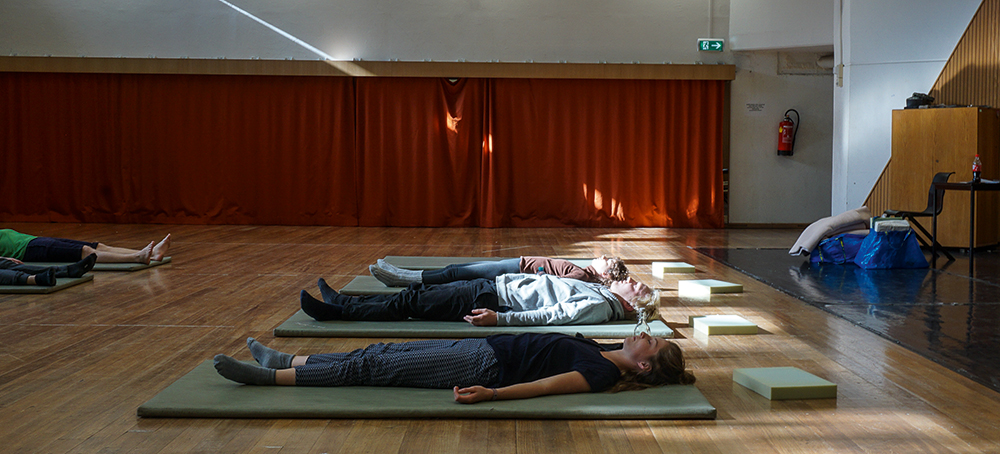
What’s meant by the term “bodywork”?
Fabiana Pastorini (FP): I seek to understand the body as an instrument. And bodywork, to me, means entering into dialogue with one’s own body. I also call it “mental training with the body”, with our thoughts quite deliberately becoming part of our movements.
Jevgenij Sitochin (JS): To me, bodywork means both freedom and control. Back when I started doing theatre in Siberia, it soon struck me that I didn’t really know what to do with my body, even though the words were coming out of my mouth. Later on, in Moscow, I joined a small theatre group where I did a lot with props alongside my work in dance, slapstick, and as a clown and acrobat. And that led to a crucial lesson: liberate yourself from your body so you can control it. Most people control their bodies with their brains. My thing, however, is to have my body do the thinking.
Doris Uhlich (DU): When it comes to control over my own body, what I feel is that my body and I are a team. We’re engaged in a constant back-and-forth between freedom and control. In my body, I can experience freedom. And that’s a wonderful, liberating thing.
Barbara Hagg-Ratheiser (BHR): What bodywork means to me is playful learning in an atmosphere of curiosity—independently and from within one’s own self. In doing so, everyone should organise themselves on their own and explore in their own individual ways, at their own pace, and according to their own interests.
How does one think with the body?
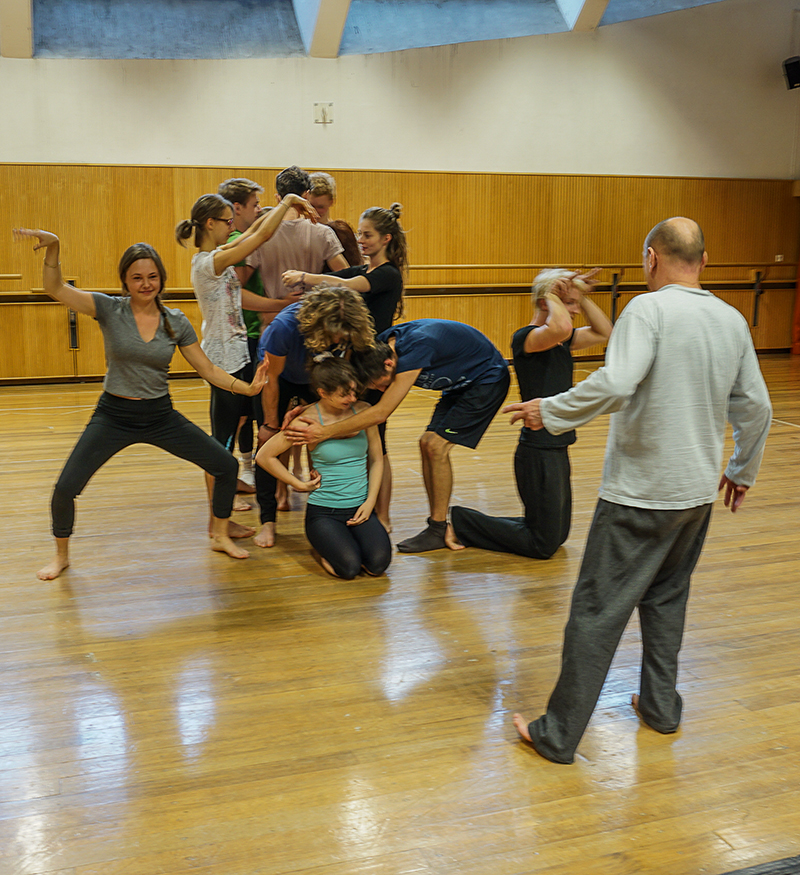
JS: It’s a bit like it is with Legos, where you can remove the figures’ heads and play with them. I try to do the same thing with my students: using specific exercises, we learn to observe and take control of the various parts of the body separately from one another. First the head, then the shoulders, elbows, hands, pelvis, knees, and feet.
DU: There’s that moment where the body starts moving and just follows a certain physical intuition. You put the body into action, live in transformations, perceive the potential of your body’s own energy, network yourself with the present, and follow inner impulses without stepping on the brakes. For me, the body is a storage system, an archive of our histories as well as the history of the world. And I love shaking up this archive, stimulating and further developing bodily thought. A body is a brain, boom chak! Remix the brain, boom chak! Activate the brain, boom chak!
BHR: Thinking with the body is also invariably an encounter with one’s own self. And for that, you have to be equally present in your body, in your mind, and in your spirit.
What role does improvisation play in all this?
JS: For me, there are three levels. First, you have to re-establish contact with your own body. The second level arises in contact with your partner, which is where improvisation begins. The third level has to do with spatial factors like the stage, lighting, and scenery and costumes. And I like working with props. What can I do with a notebook? How heavy is it? How does it feel? How does it smell? What sounds does it make? At some point, all this gives rise to an improvised story of its own.
DU: Improvisation is essential in order to develop your own material without getting stuck in patterns. I’m fond of working with longer improvisations in order to send the body through multiple states: from inspiration to boredom, from an energised state to exhaustion, and from confrontation with patterns and loops to surprises, new discoveries, and yet-unknown qualities of motion.
BHR: If you understand improvisation as being the art of the momentary, then it often comes down to making splitsecond decisions in order to avoid losing sight of the big picture. Refined perception and a free inner disposition make it possible for actors to sensitively open up to and communicate with their fellow actors. And spontaneity, as a quality in working on a role, is another thing that has to do with improvisation. Moshe Feldenkrais described spontaneity as the highest level of human maturity.
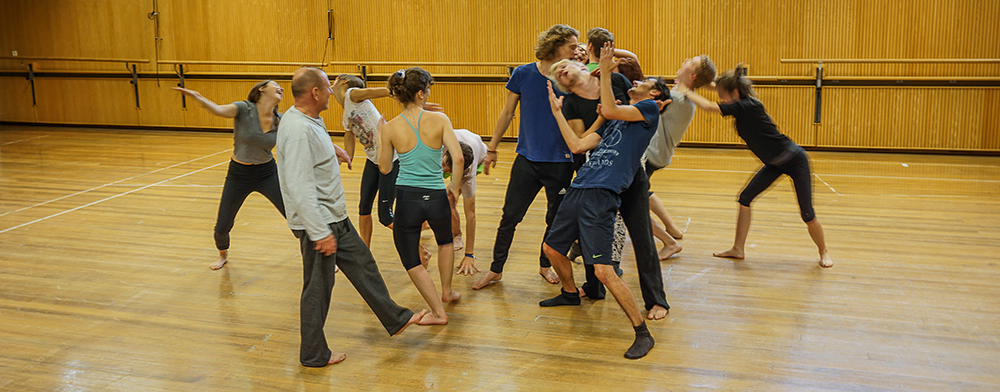
Bodywork always also has a certain intimate quality to it. How difficult is it to allow that?
DU: I experience the students in my courses as being very open and motivated to discover new territory within themselves. To do so, it’s important to create a fear-free space where inhibitions, should they become noticeable, are also welcome. Only when we look inhibitions in the eye and set them in motion can they be turned into sources of strength.
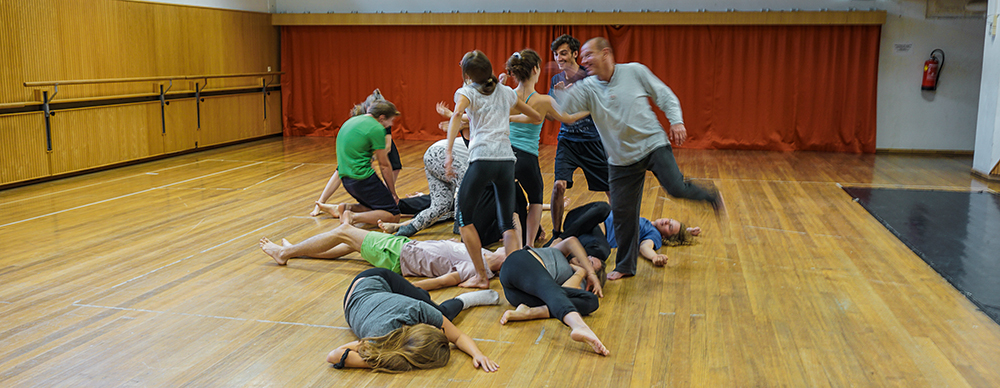
As an actor, you employ your own entire being in order to embody another person. How do you deal with this paradox?
FP: The Japanese author and stage director Yoshi Oida writes in his book The Invisible Actor that the essence of this is to be able to fully melt into the object of your portrayal. So the objective must be to stop constantly questioning precisely this contradiction.
JS: That is, of course, the ideal case. And the various techniques can help you understand where your onstage journey should go. How you apply them depends on your role, your partners and, ultimately, also on the director.
DU: My specific interest is in physical communication, in the relationship between group and individual. Life isn’t a solo—life’s an ensemble piece. So in my teaching, one of the most important objectives is to have people inhabit a happy body. A happy body is one that will happily spring into action.
BHR: Human acts are based on four components: sensory perception, our mental capacity, our emotional intelligence, and movement. Translated into onstage processes, this means that the way you think is a factor that influences the way you move. Onstage, actors are constantly challenged to remain present within themselves while acting outwardly—a constant back-and-forth between internal and external perception. It’s a challenging state to be in, one that I refer to as “public solitude”. Dealing with this is one thing that you can train using the Feldenkrais Method.
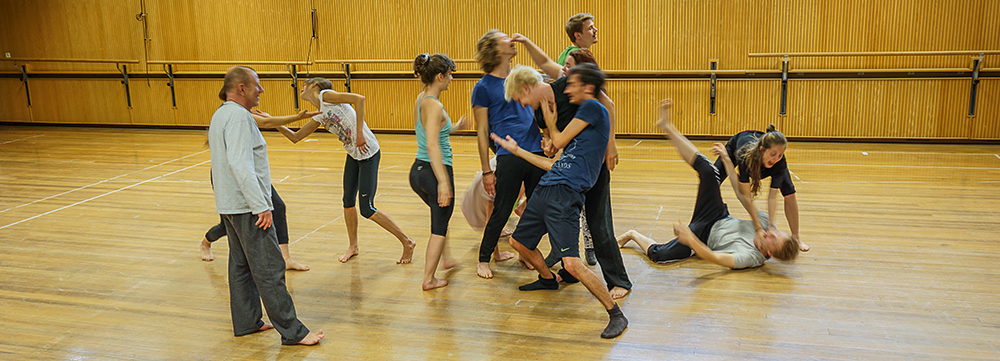
What can bodywork give people for their everyday professional lives?
DU: I think that an actor’s presence has something to do with an intelligent body. The body is more than just an instrument: it also transmits and receives various kinds of information onstage. And to this end, bodywork enables a holistic understanding of space, time, and those around us.
BHR: One of my favourite quotations by Moshe Feldenkrais is, “When you know what you’re doing, you can do what you want.” I aim to give my students an approach to thinking and working that helps them experience their own selves as human beings who are capable of doing what’s appropriate for their own selves.
FP: What’s crucial to me is not the “what”, but the “how”. Students should learn to discover and consciously perceive the space they inhabit—namely, their own bodies. Our bodies are constantly sending us messages about what works for us and what doesn’t. And the various techniques we’re teaching help one to comprehend and act upon these messages.
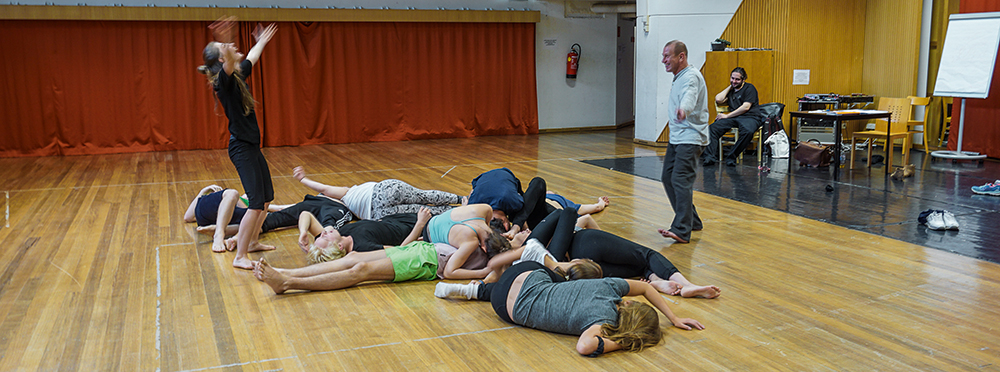
Is there such a thing as “wrong” body language onstage?
DU: If there is, then it’s superficial body language, unmotivated body language, body language that’s too intentional, forced, insensitive, or premeditated.
JS: How does one define right and wrong? It’s all a question of perspectives. Most people in the audience experience a story first and foremost via the text. It’s only then that the body comes in. The body can reinforce the text or contrast with the text. And finally, the body can also destroy the text.
BHR: As a Feldenkrais teacher, I assume that all human beings remain capable of learning throughout their lives. And in my Feldenkrais lessons, we work above all with movement patterns. It’s about first consciously perceiving oneself, through guided attentiveness and non-judgmental observation. And it’s extremely important not to learn by way of corrections, as well as to refrain from putting oneself into categories like “right” and “wrong”.
What can students expect in your courses?
FP: I work a lot with paying attention to your own body and to the space that surrounds us. That can be done very well using long sequences or stretches that take us to our physical limits.
JS: I want no expectations whatsoever! I’m a big fan of surprises. Like with Charlie Chaplin: he’d go straight ahead three times, and the fourth time he’d make a sharp left. And I view instruction as giving and taking. So I learn from my students, too.
BHR: I want to offer my students the opportunity to give themselves over to a lively and creative process that involves their own selves. In principle, we behave according to the images that we draw of ourselves. And for the most part, these images are very incomplete. So as a Feldenkrais teacher, I use verbal initiation of motion sequences and touch to steer their attention to “how” we move.
DU: In my teaching, I seek to create a fear-free space where we can experiment and create awareness of the present. I want to convey and enable experience of just how essential the body is. It’s the epicentre of our actions. And I want to open up the body, so I lead my students in practicing how to follow inner impulses while refraining from stepping on the brakes.
Fabiana Pastorini
Fabiana Pastorini was born in Buenos Aires, Argentina, where she had her first dancing lessons at the age of nine. It was in New York that she discovered her passion for contemporary dance. Since 1992, this dancer, choreographer, and pedagogue has lived in Vienna. In 2000, she suffered a herniated disc and eventually found help in the form of Chinese medicine. She then trained in kinesiology and proceeded to develop her own technique, “dance for health”, which combines elements of dance and bodywork.
Barbara Hagg-Ratheiser
Barbara Hagg-Ratheiser studied acting at Konservatorium Wien Private University (today’s MUK), where she also had her first experience with the Feldenkrais Method. After several years working in Austria and abroad as a freelance actor, she trained in Switzerland as a Feldenkrais instructor. Since then, she’s practiced the Feldenkrais method in various contexts. Barbara Hagg-Ratheiser lives with her two sons in Vienna.
Doris Uhlich
Doris Uhlich grew up on the Attersee. It was television that brought her to dance: Anna, Flashdance, Dirty Dancing. With her enthusiasm sparked, she took dancing lessons at her local music school and went on to study in the Contemporary Dance Pedagogy programme at Vienna City Conservatory (today’s MUK). She continues her training in regular workshops, such as at ImPulsTanz, and she also travels abroad in order to add new techniques to her repertoire. As an artist, Doris Uhlich sets out in search of art that empowers. She researches the archaeology of energy in various bodies and the exchange of energy between the stage and the audience.
Jevgenij Sitochin
Siberian-born Evgeny Sitochin studied stage directing in Moscow. Following numerous engagements in Moscow and Leningrad (now St. Petersburg), he moved to Western Europe in 1991 and graced the stages of cities including Vienna, Zurich, Hamburg, and Berlin. Sitochin can also be seen in numerous cinematic and television productions. As a director, he has mounted numerous music and spoken drama productions in Austria, Germany, and Switzerland.

